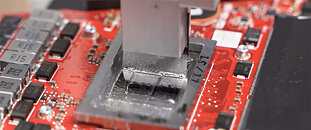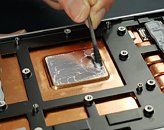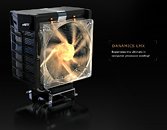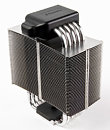Chinese Researchers Develop FlexRAM Liquid Metal RAM Using Biomimicry
Researchers from Tsinghua University in Beijing have developed FlexRAM, the first fully flexible resistive RAM memory built using liquid metal. The innovative approach suspends droplets of gallium-based liquid metal in a soft biopolymer material. Applying voltage pulses oxidizes or reduces the metal, mimicking neuron polarization. This allows the reversible switching between high and low resistance states corresponding to bit 1s and 0s for data storage. Even when powered off, data persists in the inert liquid for 43,200 seconds (or 12 hours). The current FlexRAM prototype consists of 8 independent 1-bit memory units, storing a total of 1 byte. It has demonstrated over 3,500 write cycles, though further endurance improvements are needed for practical use. Commercial RAM is rated for millions of read/write cycles. The millimeter-scale metal droplets could eventually reach nanometer sizes, dramatically increasing memory density.
FlexRAM represents a breakthrough in circuits and electronics that can freely bend and flex. The researchers envision applications from soft robotics, medical implants, and flexible wearable devices. Compatibility with stretchable substrates unlocks enormous potential for emerging technologies. While still in the early conceptual stages, FlexRAM proves that computing and memory innovations that were once thought impossible or fanciful can become real through relentless scientific creativity. It joins a wave of pioneering flexible electronics research attaining more flexibility than rigid silicon allows. There are still challenges to solve before FlexRAM and liquid electronics can transform computing. But by proving a fluid-state memory device possible, the technology flows toward a radically different future for electronics and computation. Below, you can see the liquid metal droplet that is the FlexRAM breakthrough.
FlexRAM represents a breakthrough in circuits and electronics that can freely bend and flex. The researchers envision applications from soft robotics, medical implants, and flexible wearable devices. Compatibility with stretchable substrates unlocks enormous potential for emerging technologies. While still in the early conceptual stages, FlexRAM proves that computing and memory innovations that were once thought impossible or fanciful can become real through relentless scientific creativity. It joins a wave of pioneering flexible electronics research attaining more flexibility than rigid silicon allows. There are still challenges to solve before FlexRAM and liquid electronics can transform computing. But by proving a fluid-state memory device possible, the technology flows toward a radically different future for electronics and computation. Below, you can see the liquid metal droplet that is the FlexRAM breakthrough.

























